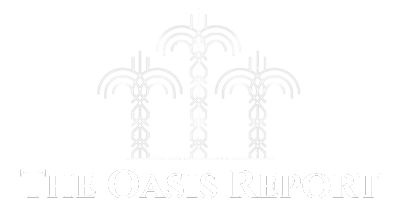Despite a climate of global and regional economic uncertainty, the International Monetary Fund (IMF) expects the Gulf Cooperation Council (GCC) countries to post steady economic growth of around 1% annually in both 2025 and 2026.
The projected growth is driven by the Gulf states’ ongoing efforts to diversify their economies and reduce reliance on oil revenues.
The forecast was shared during an economic panel in Riyadh, where Dr. Jihad Azour, Director of the IMF’s Middle East and Central Asia Department, presented the Fund’s outlook for the region.
While highlighting encouraging signs for oil-exporting countries, especially those in the Gulf, Azour warned that non-oil economies remain exposed to considerable challenges.
Azour noted that despite persistent uncertainty, a general economic recovery is anticipated across most countries in the region in 2025.
He stressed that the rebound will be more robust among the oil-exporting economies, particularly within the GCC, where the non-oil sector is playing a growing role. “We expect Gulf economies to grow by about 1% annually in both 2025 and 2026, with non-oil sectors driving that growth,” he said.
The Gulf’s ability to maintain sustainable growth rates, ranging between 3% and 5% over the past three to four years, has largely been due to their economic diversification programs. The IMF official credited these achievements to a combination of structural reforms and accelerated transformation strategies, which have helped cushion the region from global market volatility and mitigate the impact of oil production cuts under OPEC+ agreements.
These positive indicators come despite the IMF having recently revised its 2025 growth forecast for oil-exporting economies in the region downward to 2.3%, a 1.7 percentage point reduction from its previous estimate in October 2024. This revision was largely due to falling energy prices and escalating global trade tensions.
Azour downplayed the impact of new tariffs introduced by the US administration under President Donald Trump. He explained that the effect would be limited for most regional countries, as the average tariff increase is expected to be around 10%, and oil and gas exports are exempt.
With limited direct trade exposure to the US beyond energy, the broader economic impact should remain minimal.
Non-Oil Economies Face Tougher Road Ahead
In contrast, Azour painted a more challenging picture for non-oil economies in the region. These countries continue to grapple with geopolitical instability, high interest rates, and weak external demand.
Over the past 18 months, multiple shocks have significantly disrupted economies such as Lebanon, Syria, the West Bank, and Gaza, resulting in GDP losses of up to 60%.
The effects have spilled over into neighboring nations. Egypt, for instance, has lost an estimated $7 billion in Suez Canal revenues within a single year. Jordan, heavily dependent on tourism and regional stability, has also suffered from declining visitor numbers and job creation.
The IMF official warned that several Arab economies, including Lebanon, Jordan, and Morocco, remain highly vulnerable to external shocks due to their reliance on remittances, tourism, and foreign investment.
He also pointed out that global financial market volatility has increased risk premiums for the region, causing higher borrowing costs and widening yield spreads compared to other emerging markets.
Although some economic improvement is anticipated for non-oil economies compared to 2024, Azour cautioned that overall growth will likely fall short of previous expectations. Countries with high debt levels, particularly oil-importing nations, must closely monitor interest rates. “Real interest rates have doubled over the past decade, creating an additional burden for countries with large financing needs,” he said.
He stressed that 2025 will be a critical year for policy decisions, as global trade tensions, political uncertainty, and rising regional conflicts could undermine business confidence and slow economic recovery.
Success, Azour said, will hinge on the ability of governments to accelerate structural reforms, strengthen fiscal and monetary policies, and build financial buffers to withstand future shocks.
Saudi Arabia as a Regional Model
Saudi Arabia was highlighted as a leading example of economic resilience. Deputy Finance Minister Abdulmohsen Al-Khalaf stated that the Kingdom’s comprehensive reform agenda has enhanced its ability to weather global turbulence without compromising development goals.
He pointed to the implementation of strong fiscal frameworks and structural reforms as key enablers of Saudi Arabia’s flexibility in navigating economic disruptions.
Al-Khalaf stressed that fiscal policy must remain central to the regional response to global fragmentation and commodity price swings. He underscored the importance of maintaining fiscal prudence, accelerating reforms, investing in strategic sectors, and supporting private sector growth to ensure long-term stability and sustainability across the region.



